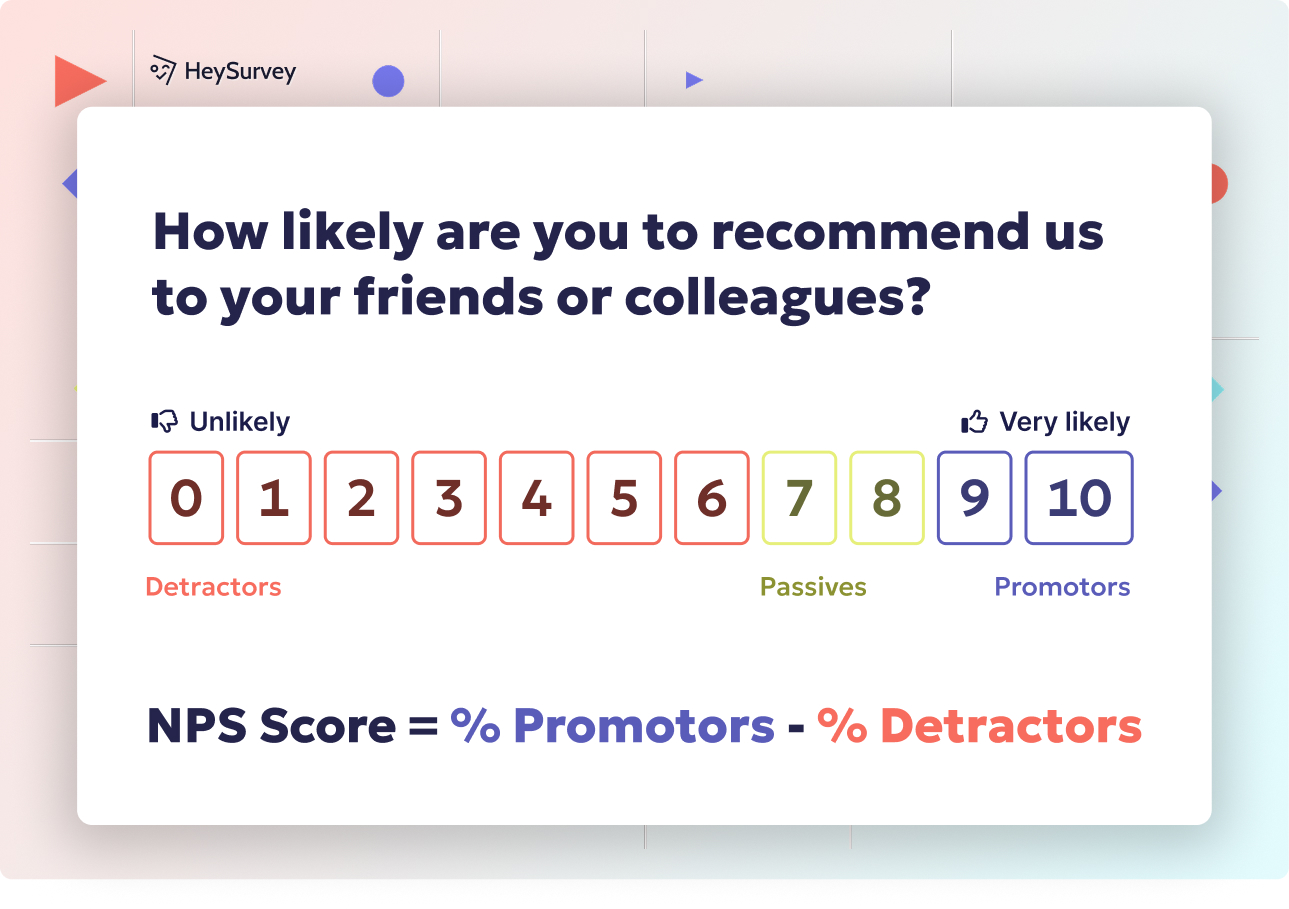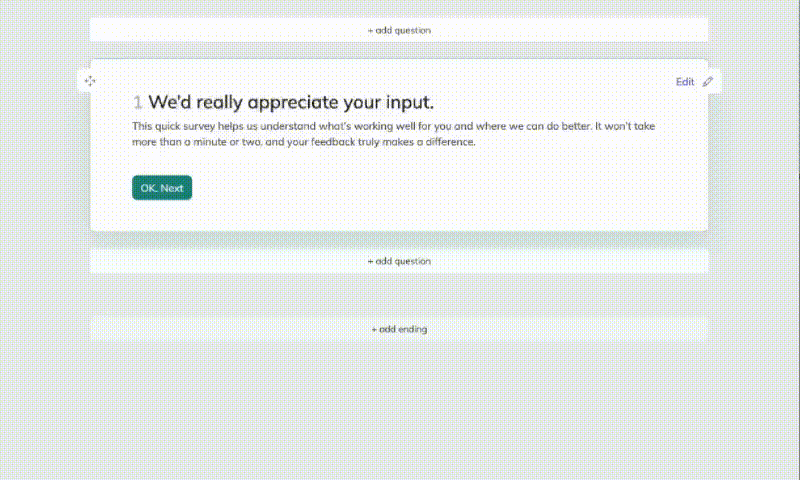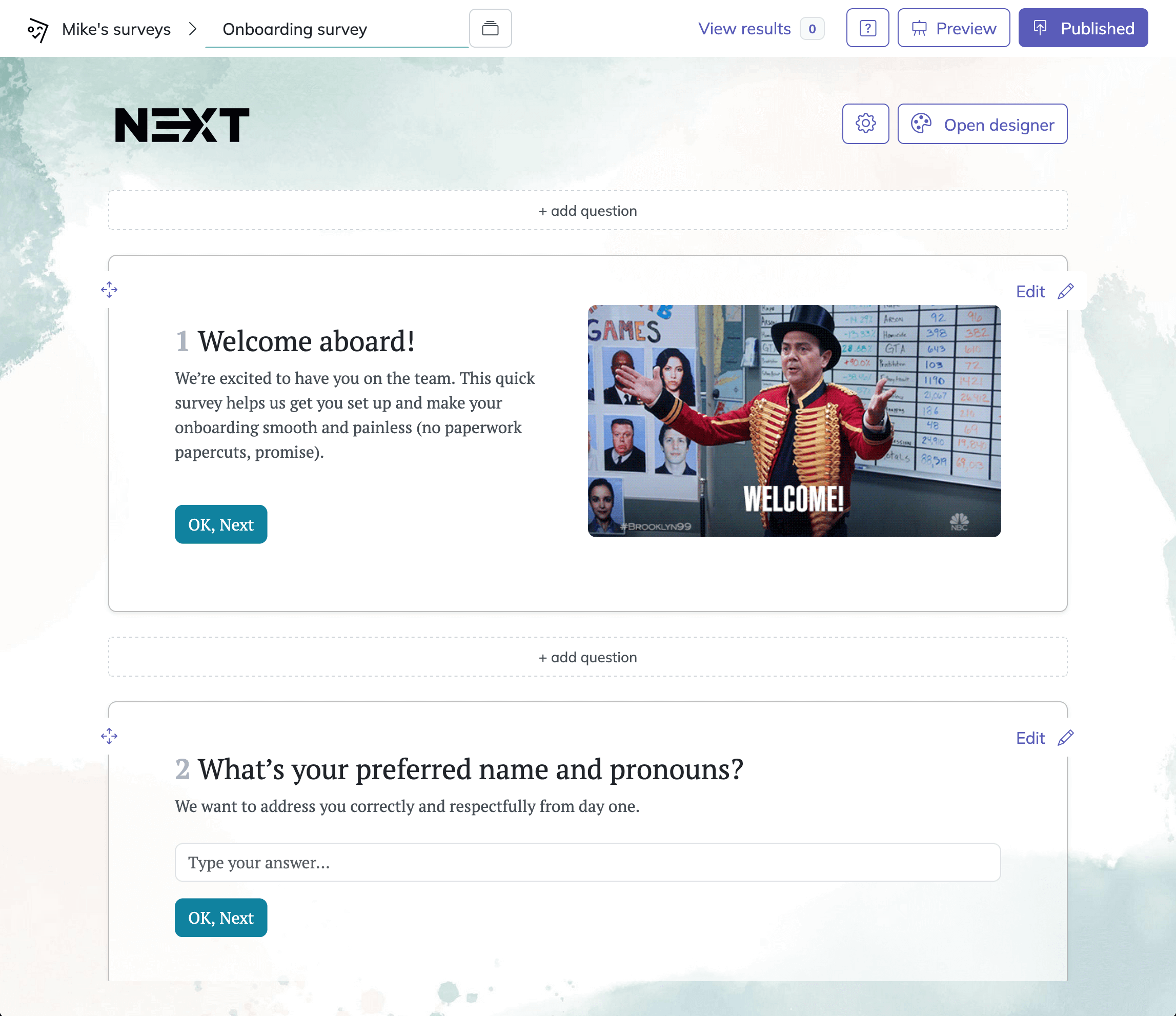29 Ad Testing Survey Questions That Boost Results
Unlock deeper insights with ad testing survey questions, 25+ sample questions, and proven best practices to refine your campaigns effectively.
Ad testing surveys are a powerful way to learn how real people respond to your ads. They help you pinpoint the tweaks needed to stand out in a busy marketplace. Ad testing insights gathered this way can unlock critical optimization opportunities before and after your campaign launches.
Concept Testing Surveys
Crafting an ad concept is like preparing a mystery dish—you need early feedback to ensure the ingredients work well together. A concept testing survey reveals whether the visuals, tone, and message are on the right track. Creative direction becomes more precise with each response you collect.
A 2022 marketing analysis found that campaigns using early concept testing achieved a 30% reduction in wasted production costs. Source
Why & When to Use
Use concept testing surveys when you have a new idea still in sketch form. Early-stage validation prevents sinking your budget into ads that might flop. It’s best to run these surveys before you commit to full-blown production.
Sample Questions
- What is your initial reaction to this ad concept?
- Which elements of the concept do you find most appealing or off-putting?
- How likely are you to remember this concept after a day?
- Which part of the ad’s message resonates with you most?
- Does this concept align with what you expect from our brand?

Brand Recall & Recognition Surveys
When people see a commercial, it should leave a memorable footprint in their minds. Brand awareness can skyrocket when ads effectively attach themselves to consumer recollection.
These surveys shed light on how quickly your brand name clicks with viewers. They also tell you if your logo or brand voice needs a bigger spotlight.
Why & When to Use
Use brand recall and recognition surveys after your ad has been live for a short period. Measuring ad effectiveness at this stage helps you see if viewers are really associating the content with your brand. That data guides tweaks to keep your brand top-of-mind.
Sample Questions
- Which brand do you think created this ad?
- Have you seen or heard of this brand before in any context?
- How quickly did you identify the brand in the ad?
- What was the most memorable part of the brand presentation?
- Would this ad make you more likely to recommend the brand to a friend?
Create your survey, it's 100% free
How to Create Your Ad Testing Survey with HeySurvey
Create a New Survey
• Click “New Survey” to begin.
• Choose a blank survey or use a recommended template.
• Name your survey to stay organized.Add Questions
• In the Survey Editor, add each “Ad Testing” question you want to ask.
• Select the question type (single choice, multiple choice, scale, etc.).
• Add descriptions and images to make your survey more engaging.Publish Your Survey
• Preview your survey to ensure everything looks good.
• Click “Publish” to receive a shareable link.
• You must have a HeySurvey account to collect and view responses.
Bonus Steps
• Apply branding by uploading your logo and customizing colors in the Designer Sidebar.
• Define settings such as survey dates, response limits, and redirect URLs to tailor the experience.
• Skip into branches by setting up branching logic for customized survey paths.
When you’re ready, click the button below to open a template and start building your ad testing survey right away!
Message Clarity & Comprehension Surveys
Sometimes, an ad can look gorgeous but confuse the audience. Clear messaging is your best friend in this situation. A message clarity survey checks if your audience understands exactly what you’re selling.
Why & When to Use
Conduct these surveys right before you finalize your ad for launch. Ensuring audience understanding at this point is crucial. You'll be able to confirm that your primary value proposition and call to action are crystal clear.
Sample Questions
- What main idea do you take away from this ad?
- Which parts of the ad’s wording, if any, felt confusing?
- How would you describe the advertised product or service to a friend?
- Does the ad make it obvious what action you should take next?
- Which benefits of the product stood out most to you?
Emotional Response Surveys
Ads that spark genuine emotion can become the talk of the town. Audience sentiment is powerful—one heartfelt story can transform casual observers into loyal customers.
The role of emotional response surveys is to see how strongly viewers connect with your narrative. If their feelings sync with your brand’s tone, you know you’re on the right path.
Why & When to Use
Use these surveys whenever you rely heavily on storytelling or evocative imagery. Measuring emotional impact helps confirm whether your ad elicits joy, nostalgia, trust, or excitement. Checking emotional resonance can save you from accidentally alienating viewers.
Sample Questions
- How did this ad make you feel overall?
- What specific emotion hit you the hardest while watching?
- Did any part of the story feel forced or insincere?
- Which moments in the ad did you find most memorable or moving?
- Would the feelings you experienced influence your decision to purchase?

A/B Variant Surveys
When you can’t decide between two designs, it’s time for a face-off. Comparative testing helps you see which variant resonates better. Maybe one background color outperforms another, or one slogan hits a sweeter spot.
Recent data suggests that A/B testing can increase ad effectiveness by up to 29%. Source
A/B variant surveys take the guesswork out of your ad strategy. Instead of flipping a coin, you get real consumer feedback to guide you.
Why & When to Use
Launch A/B variant surveys whenever you have two potential winners but can’t figure out which is truly best. Data-driven decisions will help you pinpoint the winning design or tagline. This approach is most efficient before a broad rollout or when refining mid-campaign.
Sample Questions
- Which version of the ad catches your attention more quickly?
- Which call-to-action text do you find more compelling?
- How do you rate each variant’s overall appeal on a scale of 1 to 10?
- Which design appears more trustworthy or professional?
- If you had to pick, which ad would you share with a friend?
Call-to-Action Effectiveness Surveys
A brilliant ad won’t drive results if viewers ignore the CTA. Strong engagement hinges on whether your audience feels motivated to do something after they see your content.
These surveys probe the clarity, appeal, and placement of your call-to-action. At times, a single word change can mean the difference between success and costly silence.
Why & When to Use
Use this survey type whenever you sense your CTA might not be pulling its weight. Optimizing conversions requires focusing on how immediate and relevant your ask is. Run these checks in the early stages of testing or during campaign adjustments.
Sample Questions
- How clear was the recommended action in the ad?
- What might make the CTA more relevant to your needs?
- Did the CTA feel persuasive enough to take immediate action?
- Which part of the CTA messaging appealed most to you?
- On a scale of 1 to 10, how likely are you to follow this CTA?

Brand Alignment & Perception Surveys
It’s vital for any ad to reflect the essence of your brand without feeling off-key. Consistent branding drives trust, loyalty, and customer satisfaction. If your ad’s style seems out of character, audiences can get confused or disengaged.
A 2021 survey found that 45% of consumers form brand perceptions after just one ad exposure. Source
Brand alignment and perception surveys confirm that your ad’s tone, visuals, and message match your core brand identity. This ensures you’re sending uniform signals across channels.
Why & When to Use
Run these surveys when you introduce new creative styles or revamp existing designs. Maintaining brand consistency is crucial if you’re exploring playful or edgy themes. The results will reveal whether you should lean further into the new style or tone it down.
Sample Questions
- Does this ad match what you generally expect from our brand?
- Which aspects of the brand’s identity are most evident in the ad?
- Does the ad’s style feel like a natural extension of the brand?
- Did anything in the ad conflict with your perception of our brand?
- How does this ad compare to our previous campaigns?
Post-Exposure Behavioral Intention Surveys
Small changes in audience behavior can signal a successful ad. Purchase intent is often a good sign of progress. Yet, you’ll never know if you don’t track it post-exposure.
Post-exposure behavioral surveys measure how genuinely the ad changes people’s mindset. Maybe they intend to buy sooner or might switch from a competitor.
Why & When to Use
Use these surveys after consumers have had a chance to ponder the ad. Measuring long-term impact helps you see if interest sticks or fizzles out. This insight is particularly vital for ads about bigger purchases, where decisions take more time.
Sample Questions
- Did viewing this ad influence your interest in purchasing from us?
- Have you considered comparing our product to another brand after seeing the ad?
- What new actions do you feel inclined to take?
- Would you discuss this ad with friends or family?
- How has your perception of our brand changed since seeing the ad?
Best Practices & Dos and Don’ts
Ad testing can be an art and a science blended together. Actionable insights come from a few guiding principles that keep your results clear and unbiased.
• Do keep your questions short, direct, and to the point.
• Do ensure each question maps back to a decision you can act upon.
• Do leave room for open-ended feedback when you need deeper context.
• Don’t use leading words that skew answers.
• Don’t forget to test with the right audience segments.
Adopting these principles increases your chance of obtaining meaningful results. Optimization strategies should stem from solid data rather than assumptions. This approach will sharpen your ad’s messaging and creative style in ways that truly resonate with viewers.
Conclusion
Ad testing surveys help you find out what your audience really thinks. They show you where your ads shine and where they need polishing. If you put these techniques into practice, your campaigns can transform from good to amazing. In a world hungry for attention, that edge makes all the difference. Keep surveying, keep improving, and watch your brand flourish.